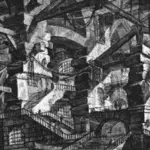A nurse in London with four children, Mary Ann Bevan became a sideshow sensation known as the "ugliest woman in the world" in the early 1900s after she developed a rare medical condition called acromegaly.
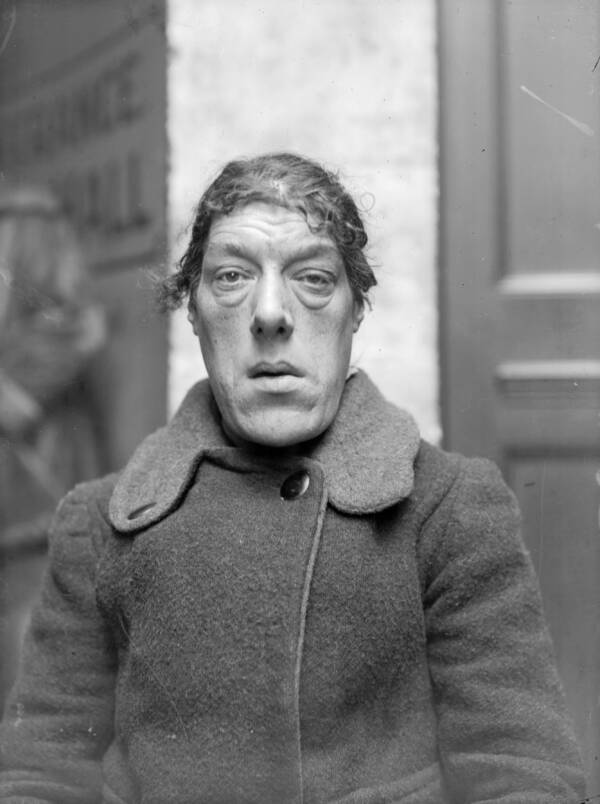
A. R. Coster/Getty ImagesMary Ann Bevan, known as the “Ugliest Woman in the World,” regularly appeared in sideshows to support her children.
Mary Ann Bevan wasn’t always “ugly.” Born on the then-outskirts of London in the late-19th century, she looked much the same as any other young woman of the time, and was even considered attractive.
That all changed when, well into adulthood and a mother several times over, a rare disfiguring disease began to manifest in her. After just a few short years, her features, hands, and feet were distorted beyond all recognition, and with no other recourse, Bevan made use of her looks to earn a living.
This is the story of how Mary Ann Bevan became the Ugliest Woman in the World, one of the most tragic figures in the once-thriving sideshow business, to support herself and her family.
Mary Ann Bevan’s Early Life
Mary Ann Webster was born on December 20, 1874, to a large family on the eastern edge of London. Throughout her childhood, she was no different than her siblings, and she eventually qualified as a nurse in 1894 before marrying Thomas Bevan, a farmer from the county of Kent, in 1903.
The Bevans settled into a happy, fruitful life, and the marriage produced two sons and two daughters, all healthy. Sadly, Thomas died suddenly in 1914, leaving Mary with four children to support on her small income. Not long after the loss of her husband, she began to show signs of acromegaly, a disorder marked by the overproduction of growth hormones in the pituitary glands.
Acromegaly is one of the rarer pituitary conditions, and today, it can be treated if detected early enough. However, under the limitations of early 20th-century medicine, Bevan had no way of treating or preventing the condition, and she soon found her features changing beyond recognition.
Mary Ann Bevan Deals With Acromegaly
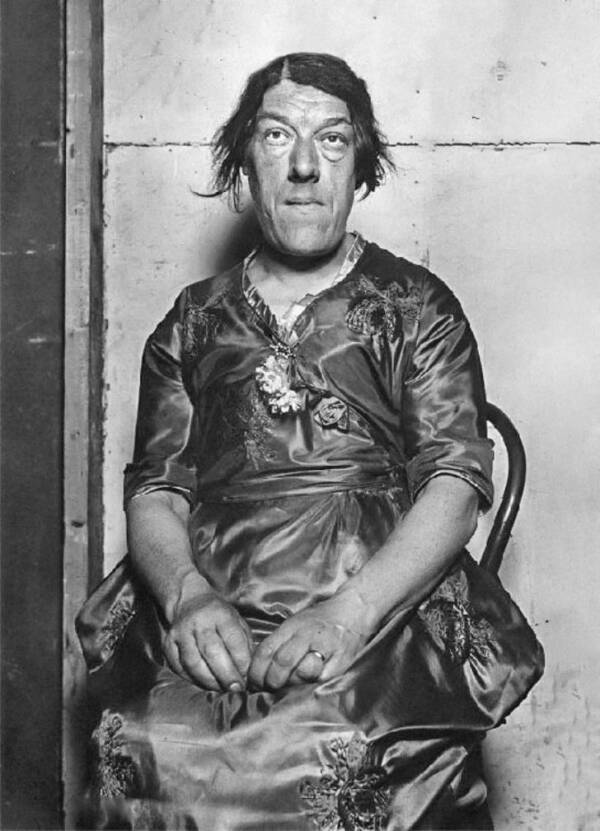
Wikimedia CommonsAcromegaly carries several health risks, ranging in severity from sleep apnea to a heightened risk of cardiovascular disease and kidney disorders.
As a result of her condition, Mary Ann Bevan’s otherwise normal hands and feet grew out of proportion, her forehead and lower jaw bulged outward, and her nose grew visibly larger. Her changing looks made it difficult to find and keep work, and she resorted to odd jobs to provide for her family.
The rare condition left her permanently disfigured. Years later, a former fairground worker claimed that it was a farmer for whom she was working who told Bevan that “all [she was] fit for [was] the ugly woman competition.”
Taking the farmer’s words to heart, Bevan soon entered a “Homeliest Woman” contest, and handily beat 250 competitors to earn the dubious title.
Her victory brought her to the attention of sideshow owners, and since her doctor assured her that her condition would only grow worse, she decided to capitalize on it for the sake of her family. Soon, she had regular work in a traveling fair, appearing at fairgrounds throughout the British Isles.
In 1920, Bevan answered an advertisement in a London newspaper reading “Wanted: Ugliest woman. Nothing repulsive, maimed or disfigured. Good pay guaranteed, and long engagement for successful applicant. Send recent photograph.” The ad had been placed by a British agent for Barnum and Bailey’s circus, who found that she had “what may sound like a paradox, the face of an ugly woman that was not unpleasant.”
The “World’s Ugliest Woman” Finding Success With Sideshows
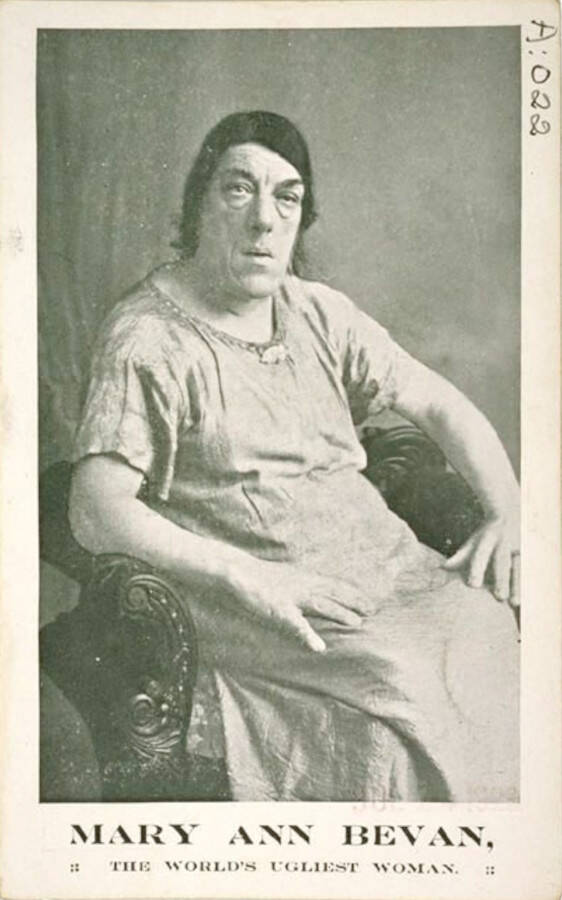
American Philosophical SocietyPostcards like these earned Mary Ann Bevan roughly $12 apiece when sold at fairgrounds.
After mailing the agent a photo taken especially for the occasion, Bevan was invited to join the sideshow at Coney Island’s Dreamland amusement park, then one of the biggest locations in the world for sideshow performers. The attraction was the brainchild of Senator William H. Reynolds and promoter Samuel W. Gumpertz, one of the most prolific figures in sideshow history, and who later worked with Harry Houdini.
She was paraded alongside other notable sideshow acts including Lionel, the Lion-Faced Man, Zip the “Pinhead,” and Jean Carroll, the Tattooed Lady. Dreamland visitors were invited to gawk at the 154 pounds she carried on her 5′ 7″ frame as well as her size 11 feet and size 25 hands.
Bevan bore the humiliating treatment calmly. “Smiling mechanically, she offered picture postcards of herself for sale,” thus securing sufficient money for herself and for her children’s education.
As the years passed, Mary Ann Bevan continued to draw crowds, and even performed with the famed Ringling Bros. and Barnum & Bailey show. She succeeded in her goal of providing for her children, as well: in just two years of performing in New York, she earned £20,000 — roughly equivalent to $1.6 million in 2022.
The Last Days Of Mary Ann Bevan
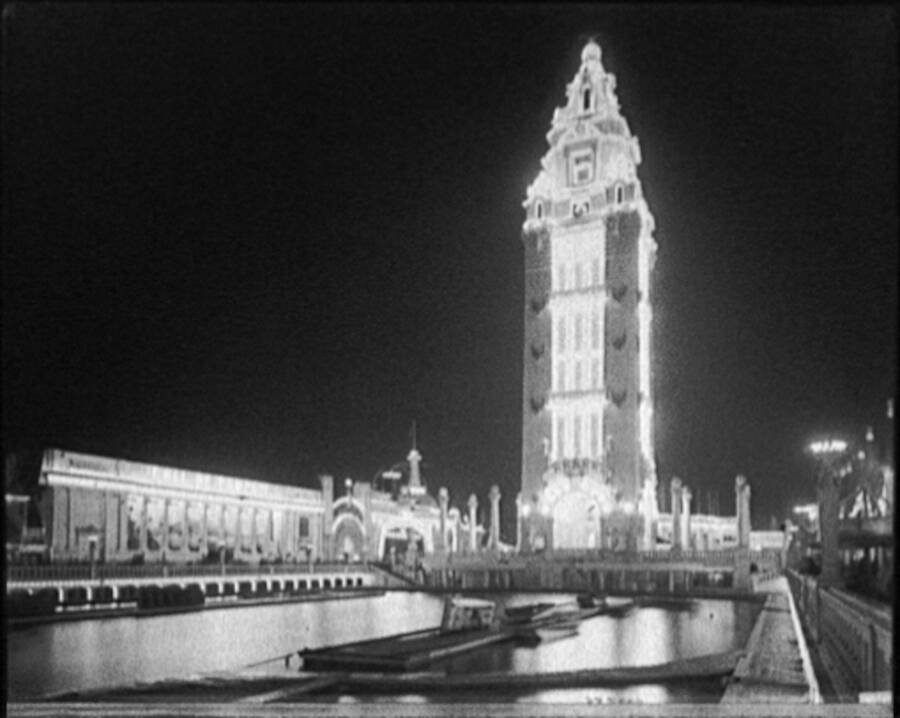
Wikimedia CommonsMary Ann Bevan continued to appear at Coney Island’s Dreamland sideshow until her death in 1933.
Mary Ann Bevan also had friends in and out of the sideshow crowd and found time for love. While performing at Madison Square Garden in 1929, she struck up a romance with a giraffe keeper known only as Andrew. She even agreed to undergo a makeover at a New York beauty parlor, where beauticians gave her a manicure and massage, straightened her hair, and applied makeup to her face.
Some people cruelly maintained that “the rouge and powder and the rest were as out of place on Mary Ann’s countenance as lace curtains on the portholes of a dreadnought.” Mary Ann herself, however, upon seeing her reflection, simply said, “I guess I’ll be getting back to work.”
Bevan continued to work at Coney Island for her remaining years, until finally, she died at the age of 59 on December 26, 1933. She was returned to her homeland for her funeral, and buried in Southeast London’s Brockley and Ladywell Cemetery.
For years, Mary Ann Bevan remained an obscure memory known only to aficionados of sideshow history until, in the early 2000s, her image was mockingly used on a Hallmark card. After objections were raised over subjecting her to further humiliation, the card was discontinued.
After reading the true story of Mary Ann Bevan, see the cruel world of sideshows. Then, find out more about the strange life of Grady Stiles, “the Lobster Boy.”

